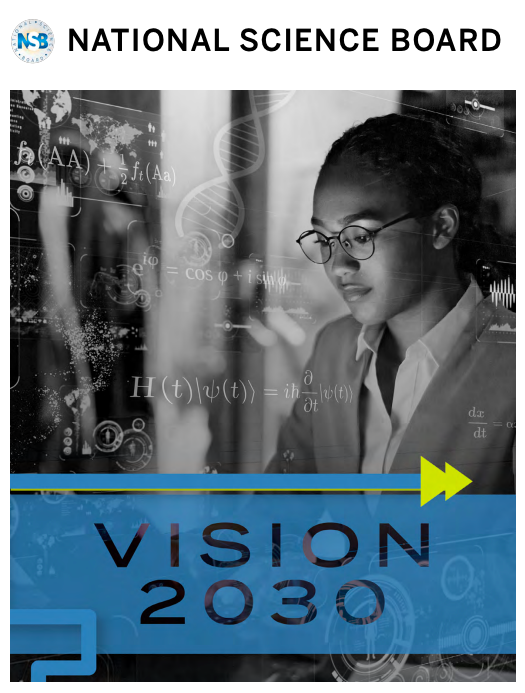Missing Million
Addressing the Talent by Finding & Inspiring the
Missing Million
 For many K12 students, opportunity gaps and achievement disparities disproportionately affect students of color and students from low-income backgrounds. The Vision 2030 plan from the National Science Board highlights the immediate importance of having more women and people from underrepresented groups take part in the science and engineering field in the United States.
For many K12 students, opportunity gaps and achievement disparities disproportionately affect students of color and students from low-income backgrounds. The Vision 2030 plan from the National Science Board highlights the immediate importance of having more women and people from underrepresented groups take part in the science and engineering field in the United States.
Excerpts from the National Science Board’s Vision 2030 Plan
“Increasing the STEM skills and opportunities for all Americans will require local, state, and federal governments, public and private educational institutions, community organizations, and industry to step up their efforts. The U.S. needs “all hands on deck” to modernize its education system, reinvest in public elementary, secondary, and postsecondary education, and support the reskilling/upskilling that workers will need throughout their careers.”
“Despite the emphasis on K-12 STEM education in recent years, American students’ test scores have stagnated over the past decade. The science and mathematics performance of U.S. students consistently ranks below that of students in many competing nations. Results from the 2018 OECD’s Programme for International Student Assessment (PISA) placed U.S. fourth and eighth graders 18th in science and 37th in mathematics out of 79 participating countries or economic regions.16 Improving K-12 student performance in STEM will require mechanisms to bring the best research-based STEM pedagogy and practices to the classroom in every school in the country. NSF-funded research has shown successful training and teaching approaches and these and other proven practices should be broadly implemented in America’s schools. Teacher education programs must incorporate more STEM education so that primary school teachers have the skills and comfort level they need to nurture young children’s curiosity, avoiding ‘lost Einsteins.’”
| FIGURE 2: MISSING MILLIONS: FASTER PROGRESS IN INCREASING DIVERSITY NEEDED TO REDUCE SIGNIFICANT TALENT GAP |
|---|
|
While the number of people from under-represented groups in the S&E workforce has grown over the past decade, much faster increases will be needed for the S&E workforce to be representative of the U.S. population in 2030. To achieve that goal, the NSB estimates that the number of women must nearly double, Black or African Americans must more than double, and Hispanic or Latinos must triple the number that are in the 2020 U.S. S&E workforce. These estimates are based on projections from the U.S. Census and Bureau of Labor Statistics, together with data from the National Center for Science and Engineering Statistics, and assume that participation of these groups in the S&E workforce increases at current rates.
|
National Science Board (NSB). 2020. Vision 2030. NSB-2020-15. Alexandria, VA. Available at https://www.nsf.gov/nsb/publications/2020/nsb202015.pdf

 x 100,000 people in 2020 S&E workforce
x 100,000 people in 2020 S&E workforce  x 100,000 additional people needed in 2030 for the S&E workforce to representative of the U.S. population
x 100,000 additional people needed in 2030 for the S&E workforce to representative of the U.S. population